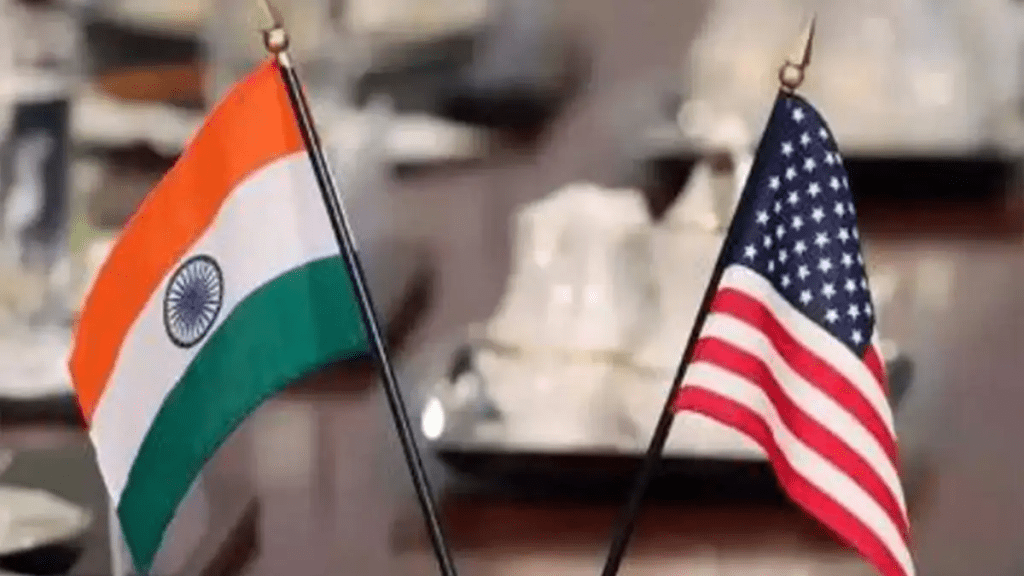With just two days left before the 90-day suspension on reciprocal tariffs ends, the fate of an India-US interim trade agreement now hinges on Washington’s response. While there are talks of a mini deal before the actual agreement, India has outlined its non-negotiable issues—especially in the agriculture and dairy sectors. Officials say it’s now up to the US to finalise the deal.
Meanwhile, US President Donald Trump is threatening an additional 10 per cent tariff on goods from any country supporting what he called BRICS‘ “anti-American policies.” “There will be no exceptions to this policy,” Trump wrote. This came as a response to a joint statement released by the finance ministers and Central Bank Governors (FMCBG) meeting of BRICS nations. The statement said, “We voiced our serious concerns with the unilateral imposition of trade and finance-related actions, including the raising of tariffs and non-tariff measures which distort trade and are inconsistent with World Trade Organisation (WTO) rules.”
The BRICS bloc—an alliance of 11 emerging economies including India—is holding its two-day summit in Brazil. Prime Minister Narendra Modi is attending the event during his visit from July 5 to July 8.
With growing geopolitical tensions, including recent friction between India and the US over Operation Sindoor, questions remain whether BRICS’ strong anti-tariff stance could further complicate the ongoing trade talks between New Delhi and Washington.
The Indian delegation, which was in Washington from June 26, has recently returned after detailed talks, and all eyes are now on whether both nations can bridge the gap in time.
Here are five key things to know about the status of the India-US interim trade deal:
1. India has drawn its red lines, deal now in US hands
According to sources cited by PTI, India has clearly defined its stance on core issues — particularly in the agriculture and dairy sectors — and the next move must come from Washington.
“India has drawn its red lines… now the ball is in the US court,” sources told PTI, adding that if both sides resolve outstanding issues, an interim trade agreement could be announced before July 9.
2. India wants exemption from steep US tariffs
On April 2, the US imposed a 26 per cent reciprocal tariff on Indian goods but temporarily suspended its implementation for 90 days. If no deal is reached by July 9, these higher tariffs could come into force.
India is seeking full exemption from this 26 per cent tariff. However, the US’s baseline tariff of 10 per cent still remains in place.
Commerce Minister Piyush Goyal recently on July 4 said that India does not enter into any trade agreement based on deadlines and will accept the proposed trade deal with the US only when it is fully finalised, properly concluded and in the national interest. “National interest should always be supreme. Keeping that in mind, if a deal is made then India is always ready to deal with developed countries,” Goyal had said on July 4.
3. No compromise on dairy and agriculture
India is firm on not opening up its dairy and agriculture sectors — two politically sensitive areas — to US imports. In fact, India has never included the dairy sector in any free trade agreement so far.
While the US is looking for access to products like apples, tree nuts, wines, alfalfa hay, and dairy, India is resisting such demands, especially ahead of elections and in consideration of farmer interests.
4. What each side wants from the deal
The US wants duty concessions in sectors such as industrial goods, automobiles (especially electric vehicles), petrochemicals, wines, dairy and agricultural products.
India, on the other hand, is eyeing lower US tariffs on its labour-intensive exports like apparel, textiles, gems and jewellery, leather, plastics, chemicals, shrimps, and horticultural products.
India is also pushing for relief in the US’s existing 25 per cent and 50 per cent tariffs on steel, aluminium, and automobiles, respectively.
5. Bilateral trade is booming despite hurdles
Despite trade tensions, the US remains India’s largest trading partner. In 2024–25, the total goods trade between the two countries stood at $131.84 billion, with India enjoying a surplus of $41.18 billion, according to PTI.
India’s exports to the US in April-May of this fiscal rose nearly 22 per cent to $17.25 billion, while imports increased by over 25 per cent to $8.87 billion.
The US is also a key investor in India, contributing over $70 billion between April 2000 and March 2025. Major American firms are deeply involved in sectors like manufacturing, IT, and professional services.
What’s next?
US President Donald Trump has said his administration is sending letters to 10–12 countries detailing reciprocal tariff rates, and the process will be finalised by July 9. These tariffs are expected to come into effect from August 1 if no agreement is reached.
Interim trade pact likely before full BTA finalisation
Back in February, India and the US agreed to start negotiations for a broader bilateral trade agreement (BTA), with the first phase expected to conclude by September–October 2025. Before that, both sides are hoping to agree on an interim pact.

